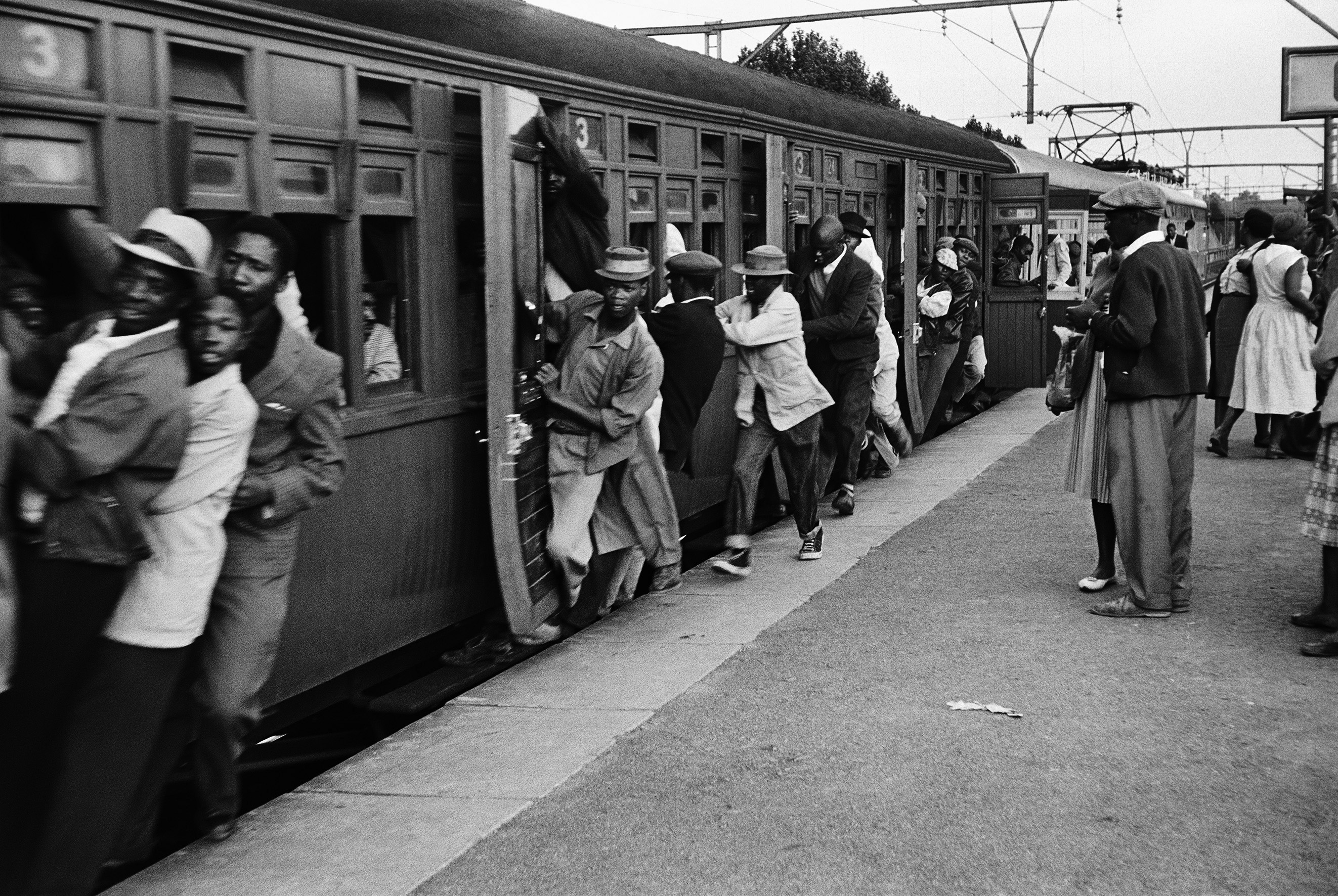First published by Random House in 1967, Ernest Cole’s House of Bondage became one of the most significant and impactful photo books of the 20th century, revealing the horrors of apartheid to the world and influencing generations of photographers around the globe. The latest edition, published by Aperture, recontextualises this pivotal book for our time.
Ernest Cole was born in what was then known as the Transvaal in South Africa in 1940.
When he fled South Africa in 1966, at the age of 26, he smuggled out his negatives; House of Bondage was published the following year with his writings and first-person account. The book was promptly banned in South Africa, and Cole was exiled, settling in the US.
 Untitled ca. 1960s. (Photo: House of Bondage, Aperture, 2022, © Ernest Cole Family Trust)
Untitled ca. 1960s. (Photo: House of Bondage, Aperture, 2022, © Ernest Cole Family Trust)
 Untitled ca 1960s. (Photo: House of Bondage, Aperture, 2022, © Ernest Cole Family Trust)
Untitled ca 1960s. (Photo: House of Bondage, Aperture, 2022, © Ernest Cole Family Trust)
In 2017, more than 60,000 of Cole’s negatives – missing for more than 40 years – resurfaced in Sweden.
Cole was associated with Magnum Photos and received funding from the Ford Foundation to undertake a project that looked at black communities and cultures in the US. He spent an extensive time in Sweden and became involved with the Tiofoto collective. He died in New York of cancer in 1990 at the age of 49.
 Untitled. South Africa, ca. 1960s. (Photo: House of Bondage, Aperture, 2022, © Ernest Cole Family Trust)
Untitled. South Africa, ca. 1960s. (Photo: House of Bondage, Aperture, 2022, © Ernest Cole Family Trust)
 Earnest boy squats on haunches and strains to follow lessons in heat of packed classroom. South Africa, ca. 1960s. (Photo: House of Bondage, Aperture, 2022, © Ernest Cole Family Trust)
Earnest boy squats on haunches and strains to follow lessons in heat of packed classroom. South Africa, ca. 1960s. (Photo: House of Bondage, Aperture, 2022, © Ernest Cole Family Trust)
Read in Daily Maverick:
“World-class photography, born under the roof of apartheid”
“Kodachrome moments: News photographers who took iconic pictures – and no kak”
Cole, a black South African, photographed the underbelly of apartheid in the 1950s and 1960s, often at great personal risk. He methodically captured the daily atrocities and indignities for the black majority under the apartheid system – picturing its miners, its police, its hospitals, its schools.
Visit Daily Maverick's home page for more news, analysis and investigations
This new edition of House of Bondage retains Cole’s original writing and images, while adding new perspectives on his life and the legacy of House of Bondage, including a preface in the form of a lament by Mongane Wally Serote. It also features an added chapter of never-before-seen photographs of black creative expression and cultural activity that took place under apartheid. Cole had selected images for this section and titled it Black Ingenuity, though it was not published in the original edition.
 During a group medical examination, the nude men are herded through a string of doctors' offices. South Africa, ca. 1960s. (Photo: House of Bondage, Aperture, 2022, © Ernest Cole Family Trust)
During a group medical examination, the nude men are herded through a string of doctors' offices. South Africa, ca. 1960s. (Photo: House of Bondage, Aperture, 2022, © Ernest Cole Family Trust)
 Students kneel on the floor to write. South Africa, ca. 1960s. (Photo: House of Bondage, Aperture, 2022, © Ernest Cole Family Trust)
Students kneel on the floor to write. South Africa, ca. 1960s. (Photo: House of Bondage, Aperture, 2022, © Ernest Cole Family Trust)
 Typical location has acres of identical four-room houses on nameless streets. Many are hours by train from city jobs. South Africa, ca. 1960s. (Photo: House of Bondage, Aperture, 2022, © Ernest Cole Family Trust)
Typical location has acres of identical four-room houses on nameless streets. Many are hours by train from city jobs. South Africa, ca. 1960s. (Photo: House of Bondage, Aperture, 2022, © Ernest Cole Family Trust)
 Untitled, South Africa, ca. 1960s. (Photo: House of Bondage, Aperture, 2022, © Ernest Cole Family Trust)
Untitled, South Africa, ca. 1960s. (Photo: House of Bondage, Aperture, 2022, © Ernest Cole Family Trust)
 Handcuffed blacks were arrested for being in a white area illegally. South Africa, ca. 19602. (Photo: House of Bondage, Aperture, 2022, © Ernest Cole Family Trust)
Handcuffed blacks were arrested for being in a white area illegally. South Africa, ca. 19602. (Photo: House of Bondage, Aperture, 2022, © Ernest Cole Family Trust)
Read in Daily Maverick: “Photographer Ernest Cole: Of bondage and freedom – Discovery of trove of negatives a game changer”
Available again more than 50 years later and for the first time in South Africa, House of Bondage remains a visually powerful and politically incisive document. The launch of House of Bondage took place at the Wits Art Museum on 29 November, at which speakers Serote, Hlonipha Mokoena and Nozizwe Vundla reflected on the significance of Cole’s legacy. DM168
This story first appeared in our weekly Daily Maverick 168 newspaper, which is available countrywide for R25.





 Handcuffed blacks were arrested for being in a white area illegally, South Africa, ca. 19602. (Photo: House of Bondage, Aperture, 2022, © Ernest Cole Family Trust)
Handcuffed blacks were arrested for being in a white area illegally, South Africa, ca. 19602. (Photo: House of Bondage, Aperture, 2022, © Ernest Cole Family Trust)